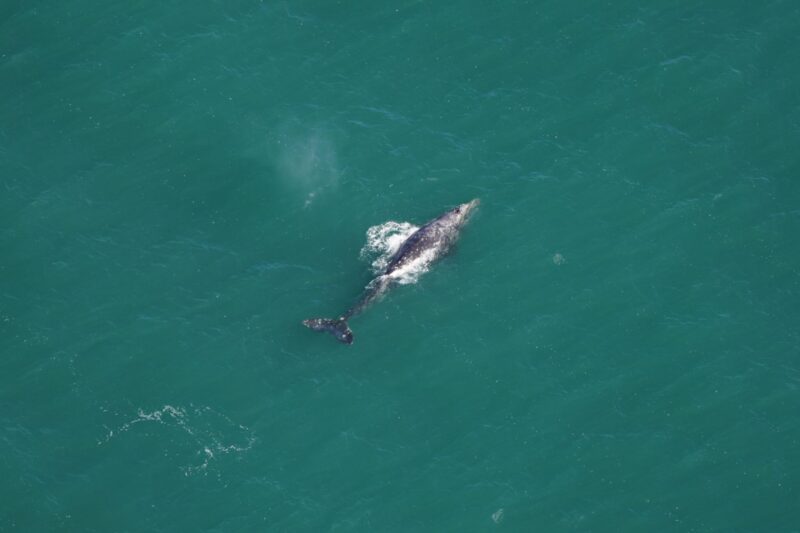Orla O’Brien and research partner Kate Laemmle were looking for right whales, humpbacks, and fin whales about 50km south of Nantucket, Massachusetts when they spotted an unexpected visitor — a grey whale. The species had disappeared from the Atlantic Ocean 200 years ago.
At first, they were unsure what they were looking at. The whale had no dorsal fin, which suggested a right whale, but its skin did not match that. They kept waiting for a second appearance so they could get a better look.
“The next time it came up, we got better photos of the head and the whole body. It was hard to believe,” Orla O’Brien said in an interview with the Canadian Broadcasting Corporation.
Grey whales live in the North Pacific, but vanished from the Atlantic in the 17th century as a result of hunting and natural decline. The entire species almost went extinct, but the Pacific population has bounced back. It is now classed as a species of “least concern” by the International Union for the Conservation of Nature.
Incredibly rare event
“My brain was trying to process what I was seeing, because this animal was something that should not really exist in these waters,” said Laemmle in a statement. “We were laughing because of how wild and exciting this was!”
This is only the fifth time in the last 15 years a grey whale has been spotted in the Atlantic or the Mediterranean.
In an incredibly rare event, our #AndersonCabotCenter aerial survey team spotted a gray whale off the New England coast last week, a species that has been extinct in the Atlantic for more than 200 years! 😮
More: https://t.co/skjKK3zk29#AerialSurvey #GrayWhale pic.twitter.com/cKUzqaJCOA
— New England Aquarium (@NEAQ) March 5, 2024
O’Brien and Laemmle say that the whale might be the same one that appeared off Florida at the end of 2023. They believe that it initially came from the Pacific through the Northwest Passage over the summer, thanks to climate change. In the past, grey whales never took this route, because they couldn’t handle the thick sea ice.





